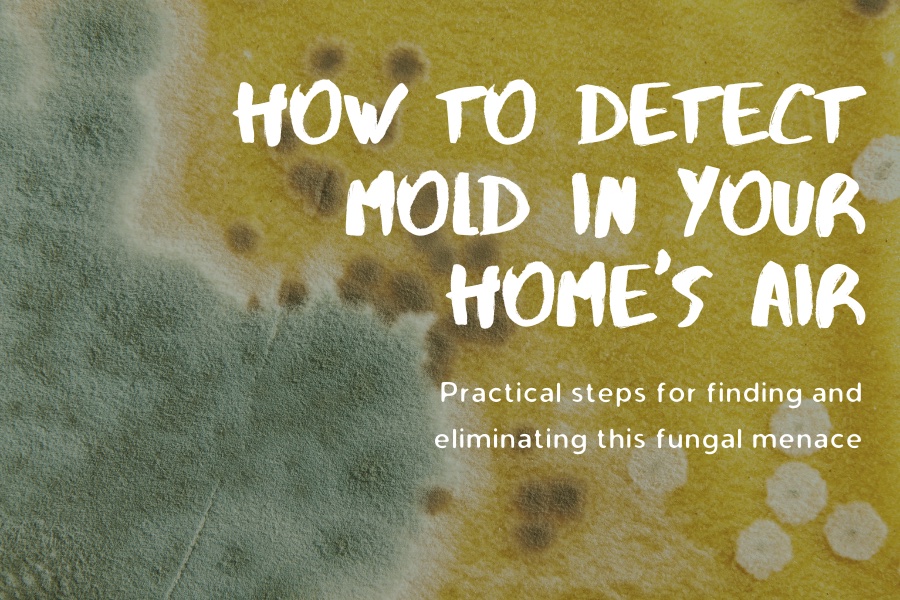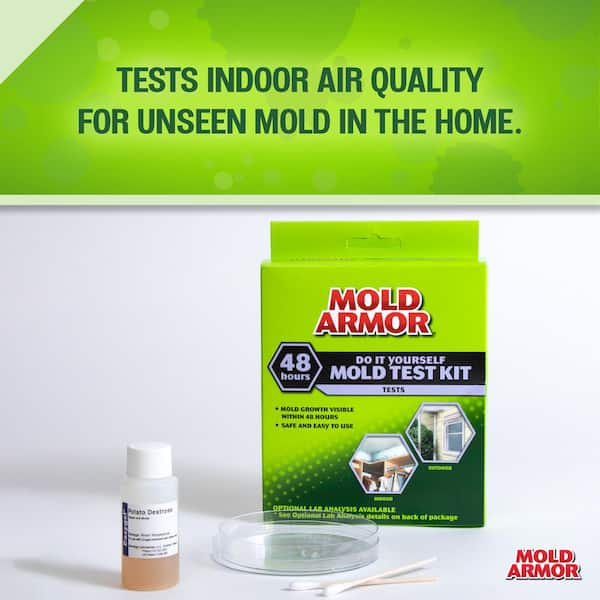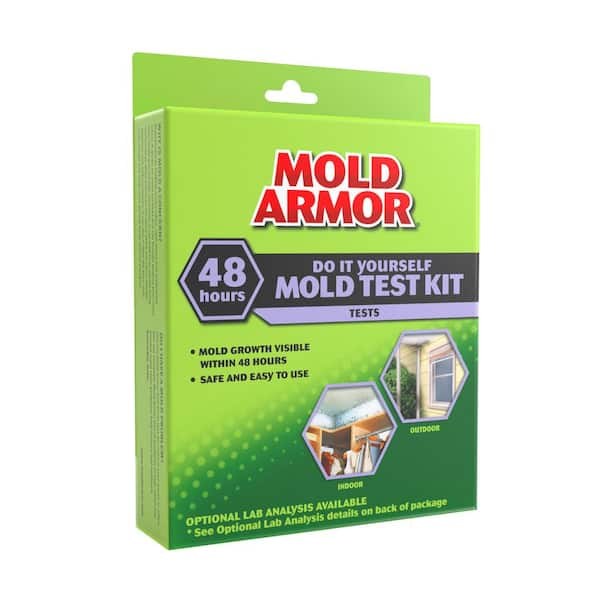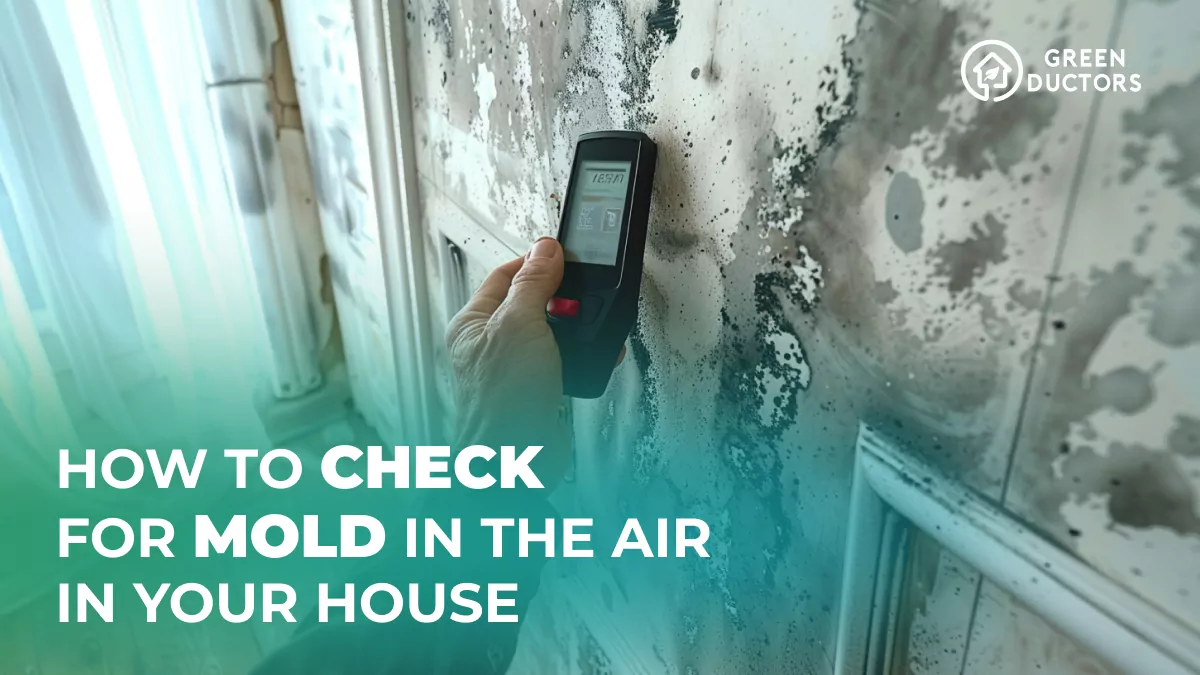Mold can cause serious health problems. It’s important to detect it early.
Mold in your home’s air isn’t always visible. It can hide behind walls, under floors, and in your HVAC system. This makes it tricky to spot. But don’t worry, there are ways to find it. Identifying mold early can prevent health issues and damage to your home.
In this blog, we will guide you on how to detect mold in your home’s air. We will cover the signs to look out for and the best methods to test for mold. Stay tuned to protect your home and health from this hidden threat.
Signs Of Mold Presence
Mold in your home’s air can pose serious health risks. Detecting mold early can prevent these problems. Recognizing the signs of mold presence is key.
Visible Mold Growth
Look for black, green, or white spots on walls or ceilings. These spots may be fuzzy or slimy. Check damp areas like bathrooms and basements. Mold often grows in places with water damage.
Musty Odor
A musty smell is a strong indicator of mold. This odor is often described as earthy or damp. Smell around the house, especially in enclosed spaces. Trust your nose. The scent often reveals hidden mold.

Credit: youriaq.com
Health Symptoms
Identifying mold in your home’s air can be tricky. Yet, your health symptoms can provide clues. Mold exposure can lead to various health issues. Recognizing these symptoms early can help you act fast.
Respiratory Issues
Mold spores in the air can irritate the respiratory system. You might notice frequent coughing or sneezing. Trouble breathing can also occur. These signs may worsen over time. Especially in people with asthma. Wheezing and shortness of breath are common indicators.
Allergic Reactions
Allergic reactions are another sign of mold. These can include itchy eyes or a runny nose. You might experience skin rashes. Sneezing fits are also common. These symptoms can mimic other allergies. Yet, they persist in the presence of mold. Mold allergies can be severe. They can disrupt daily life significantly.
Common Mold Locations
Mold can hide in many areas of your home. Knowing the common mold locations helps in early detection and prevention. Mold loves damp, dark, and humid spots. Let’s explore the most common places where mold can grow.
Bathrooms And Kitchens
Bathrooms and kitchens are prime locations for mold. These rooms have high moisture levels from showers, baths, and cooking. Look for mold in these areas:
- Shower curtains and tiles
- Under sinks
- Around windows
- In grout lines
Keep these areas dry and clean. Use exhaust fans to reduce moisture.
Basements And Attics
Basements and attics are often neglected. They can become mold havens because of their damp and dark nature. Check these spots in your basement and attic:
- Concrete walls and floors
- Storage boxes
- Insulation
- Wooden beams
Ensure proper ventilation and use dehumidifiers to keep these areas dry.

Credit: www.homedepot.com
Diy Mold Testing
Detecting mold in your home’s air can be daunting. DIY mold testing is an effective and budget-friendly approach. You can identify mold presence and take necessary actions without hiring professionals.
Home Test Kits
Home test kits are convenient and easy to use. They help you detect mold spores in the air. Most kits include petri dishes, swabs, and instructions.
Follow these steps to use a home test kit:
- Place the petri dishes in different areas of your home.
- Leave them exposed for a specified time, usually 24-48 hours.
- Seal the dishes and send them to a lab for analysis.
Results will indicate mold presence and type. This helps you understand the severity of the mold problem.
Swab Samples
Swab samples are another DIY method to detect mold. They are useful for surface testing. You can collect samples from visible mold growth or suspected areas.
Here’s how to collect swab samples:
- Use a sterile swab provided in the kit.
- Rub the swab on the suspected mold area.
- Place the swab in the provided container.
- Send the container to a lab for analysis.
Lab results will show mold type and concentration. This information helps you decide on the next steps.
Both home test kits and swab samples are effective DIY methods. They help you detect mold and take action early. Preventing mold growth is crucial for a healthy home environment.
Professional Mold Inspection
Mold can pose serious health risks. It is crucial to detect it early. A professional mold inspection can help identify mold in your home’s air. Experts use specialized tools to find hidden mold. This ensures a safe living environment for you and your family.
Hiring Experts
Hiring experts for mold inspection is essential. Professionals have the knowledge and tools to detect mold accurately. They can access hard-to-reach areas, ensuring a thorough inspection. Experts will provide a detailed report on the mold situation in your home.
Here are some reasons to hire professionals:
- They use advanced equipment
- They have experience in detecting mold
- They provide reliable results
- They offer remediation advice
Inspection Process
The inspection process involves several steps. First, experts will conduct a visual inspection. They look for visible signs of mold. They also check for moisture sources, as mold thrives in damp conditions.
Next, they use tools to test the air quality. These tools can detect mold spores in the air. The experts may also take samples from different areas of your home. These samples are sent to a lab for analysis.
| Step | Description |
|---|---|
| Visual Inspection | Checking for visible mold and moisture sources. |
| Air Quality Testing | Using tools to detect mold spores in the air. |
| Sample Collection | Taking samples for lab analysis. |
Finally, the experts will provide a detailed report. This report includes the findings and recommendations for remediation. Following these recommendations can help you remove mold and prevent it from returning.
Air Quality Monitors
Detecting mold in your home’s air is crucial for health. One efficient way is using air quality monitors. These devices can help identify mold spores in your environment. Knowing the types and benefits of these monitors is key.
Types Of Monitors
There are different types of air quality monitors. Some are portable, while others are fixed. Portable monitors are easy to move around the house. Fixed monitors stay in one place, providing constant data. You can also find monitors with digital displays. These show real-time air quality readings. Others connect to your smartphone for easy tracking.
Some advanced monitors can detect multiple pollutants. These include mold spores, dust, and chemicals. Choosing the right type depends on your needs. Think about where you will use it and what you need to measure.
Benefits Of Monitoring
Monitoring your air quality has many benefits. First, it helps you know if there is mold in your air. This knowledge is the first step to taking action. You can then clean or improve your ventilation.
Second, it helps protect your health. Mold can cause allergies and respiratory issues. By knowing your air quality, you can reduce these risks. Third, it can save you money. Early detection of mold can prevent costly repairs. It can also help you avoid medical bills related to mold exposure.
Lastly, it provides peace of mind. Knowing your air is safe makes you feel more comfortable at home. You can relax, knowing you are breathing clean air.
Preventative Measures
Detecting mold in your home’s air can be challenging. Mold often grows unnoticed, causing health issues and damage. Implementing preventative measures can help maintain a mold-free environment. Here, we discuss improving ventilation and controlling humidity.
Improving Ventilation
Good ventilation is crucial to prevent mold growth. Ensure your home has adequate airflow. Open windows and doors regularly to let fresh air in. Use exhaust fans in bathrooms and kitchens to remove moisture-laden air. Place fans in rooms with poor circulation to improve airflow. Regularly clean and maintain air ducts and vents.
Install an air purifier with a HEPA filter. This helps to reduce airborne mold spores. Ensure your HVAC system is working efficiently. Schedule regular maintenance checks to keep it in top condition. Proper ventilation reduces moisture, which mold needs to grow.
Controlling Humidity
High humidity levels promote mold growth. Keep indoor humidity levels below 60%. Use a hygrometer to monitor humidity levels in your home. Dehumidifiers can help maintain optimal humidity levels. Place them in areas prone to moisture, like basements and bathrooms.
Fix any leaks or water damage immediately. Check for leaks in plumbing, roofs, and windows. Ensure proper drainage around your home to prevent water buildup. Use moisture-absorbing products like silica gel in damp areas. Regularly inspect and clean gutters to prevent water accumulation.

Credit: www.homedepot.com
Mold Remediation
Discovering mold in your home’s air can be alarming. Mold remediation is the process of removing mold and preventing its return. This process ensures your home remains healthy and safe. It requires careful attention and specific techniques.
Cleaning Techniques
Effective cleaning techniques are vital for mold remediation. Begin by wearing protective gear like gloves and masks. Use soap and water to scrub mold from hard surfaces. For stubborn mold, use a mixture of vinegar and baking soda. Ensure the area is dry after cleaning to prevent mold regrowth.
Consider using HEPA vacuums to trap mold spores. These vacuums are designed to capture tiny particles. They help in preventing the spread of mold in your home. Dispose of vacuum bags and filters safely after use.
When To Call Professionals
Sometimes, cleaning mold yourself isn’t enough. Large mold infestations need professional help. If you see extensive mold growth, it’s best to call experts. They have the tools and knowledge to handle severe cases.
Professional mold remediation services can also identify hidden mold. They use advanced equipment to detect mold behind walls and under floors. This ensures that all mold is removed, not just what’s visible. Calling professionals guarantees a thorough and effective solution.
Frequently Asked Questions
What Are Common Signs Of Mold At Home?
Look for musty odors, visible mold spots, water stains, and increased allergy symptoms. These are common indicators of mold presence.
Can Mold Affect Indoor Air Quality?
Yes, mold can release spores and toxins, reducing air quality. This can cause respiratory issues and other health problems.
How Do I Test For Mold In The Air?
You can use mold test kits, hire professionals, or use air quality monitors. These methods help detect mold presence.
What Health Problems Can Mold Cause?
Mold exposure can lead to allergies, asthma, and respiratory infections. It can also cause skin irritation and other health issues.
Conclusion
Detecting mold in your home’s air is crucial for health. Regular inspections help. Use mold test kits for accuracy. Watch for musty smells and visible spots. Call professionals if needed. Keep humidity levels low and fix leaks promptly. Clean often to prevent mold growth.
Protect your family by staying vigilant. Mold detection ensures a safe, healthy home.
Rakib Sarwar is a Registered Pharmacist and a reputed health and wellness blogger. He has a great interest in Air purifiers.
